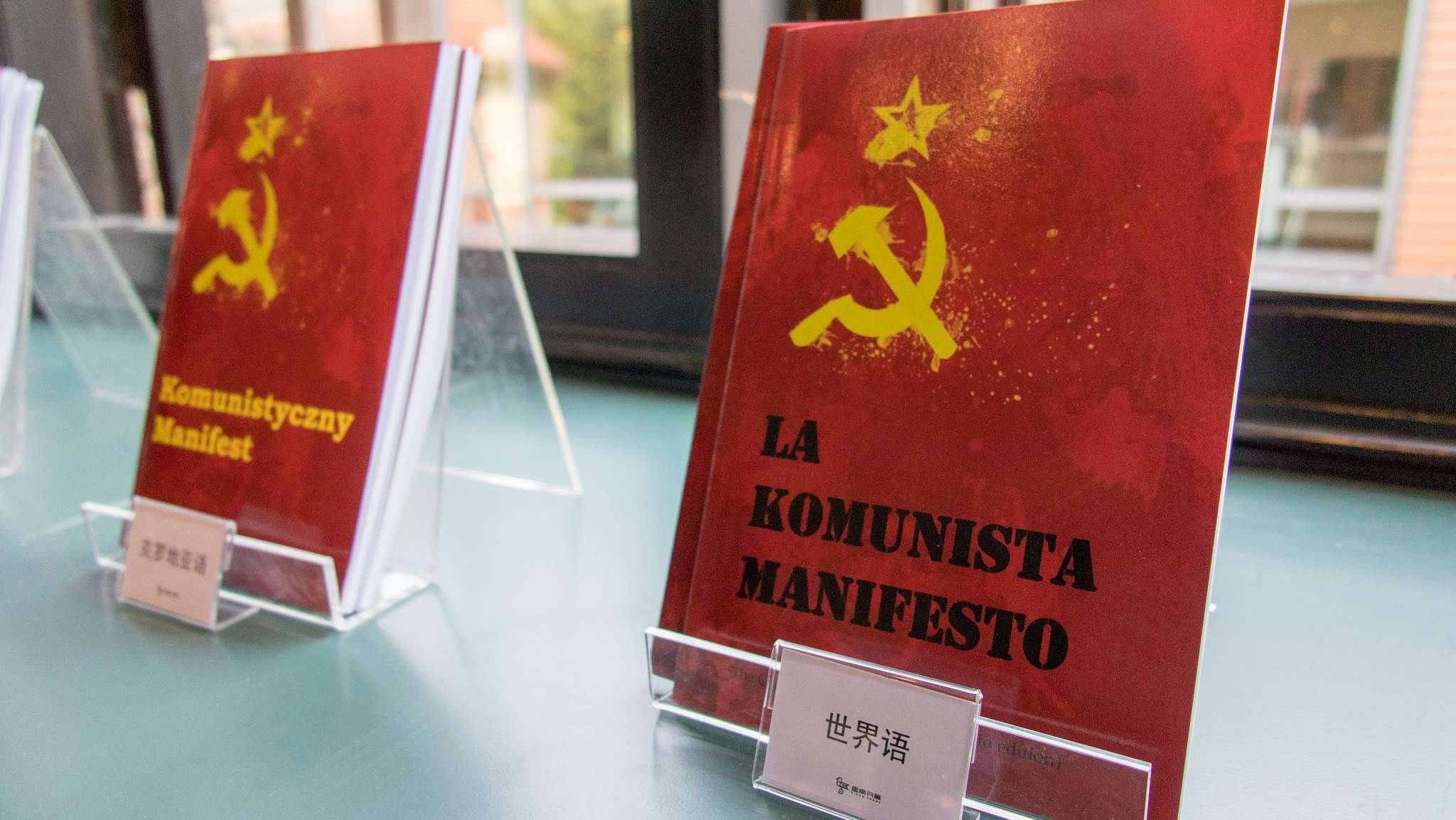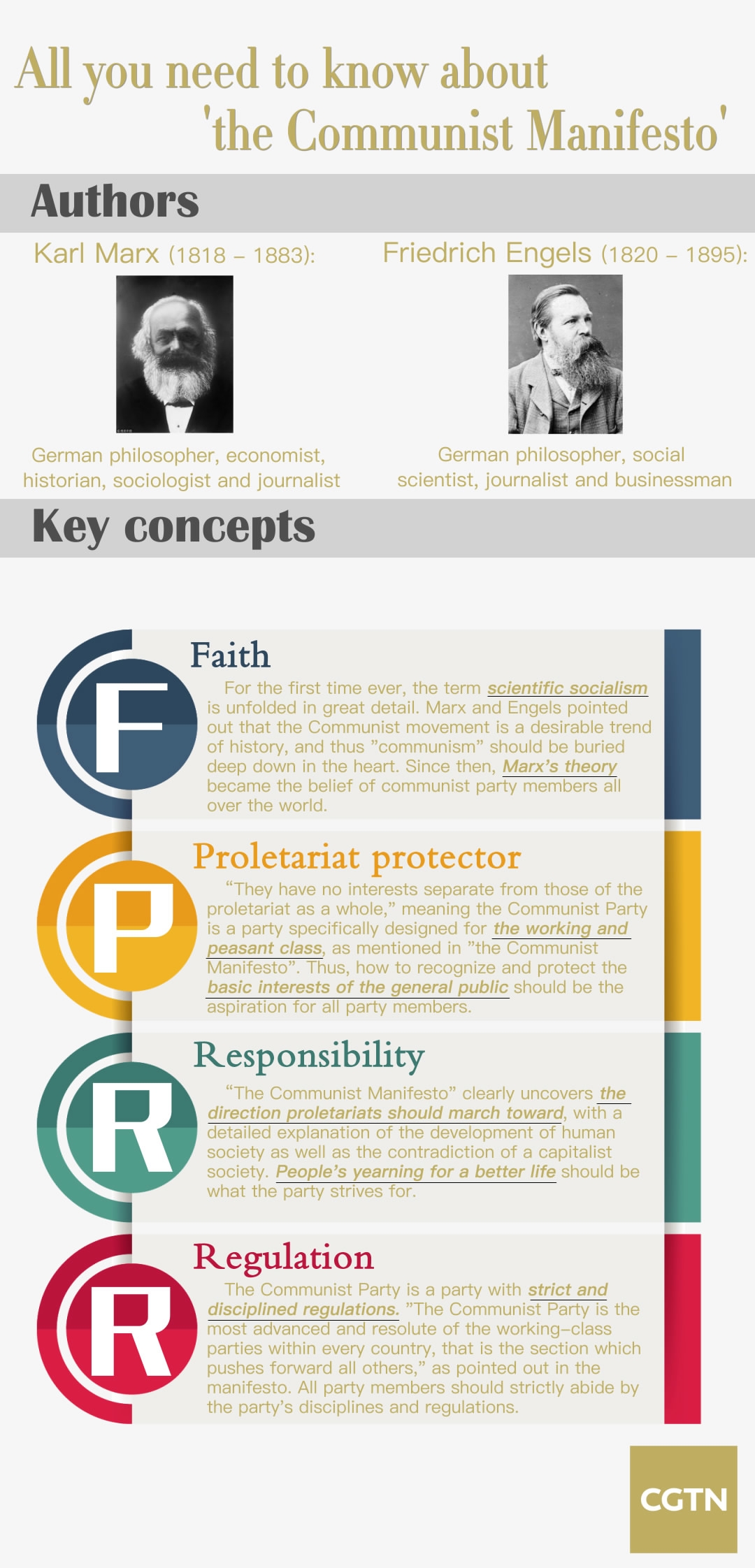
Politics
11:48, 04-May-2018
Infographics: Summarizing the 'Communist Manifesto'
By Li Zhao

The world on Saturday marks the 200th anniversary of the birth of Karl Marx – the German political theorist and philosopher whose ideas and hard work have eventually shaped history.
One can never mention Marx without talking about the "Communist Manifesto," the manuscript he co-authored with his close friend Friedrich Engels and which pointedly established relations between politics, society and economy.
The concise document summarized the worldview of its two authors who weighed in on topics such as class struggles and capitalism, and was the foundation of what would later become known as Marxism.
As one of the most influential political documents in history, the "Communist Manifesto" is filled with "clarity and brilliance of genius" as Russian revolutionary leader Vladimir Lenin put it.
China has been especially influenced by the manifesto and Marxism.
"The most valuable and influential spiritual wealth left by Marx is the scientific theory of Marxism named after him," Chinese President Xi Jinping said on Friday at a conference marking the birth anniversary of the founding father of communism in the Great Hall of the People in Beijing.
"The Communist Party of China (CPC) combines the basic principles of Marxism with the realities of new China," Xi noted, emphasizing that CPC members "have been and will be the guardians and practitioners of Marxism and should contribute to the rule of developing Marxism."
One hundred and seventy years since its publication, the "Communist Manifesto" has influenced not only China, but also the world as a whole. What exactly are its key concepts?


SITEMAP
Copyright © 2018 CGTN. Beijing ICP prepared NO.16065310-3
Copyright © 2018 CGTN. Beijing ICP prepared NO.16065310-3